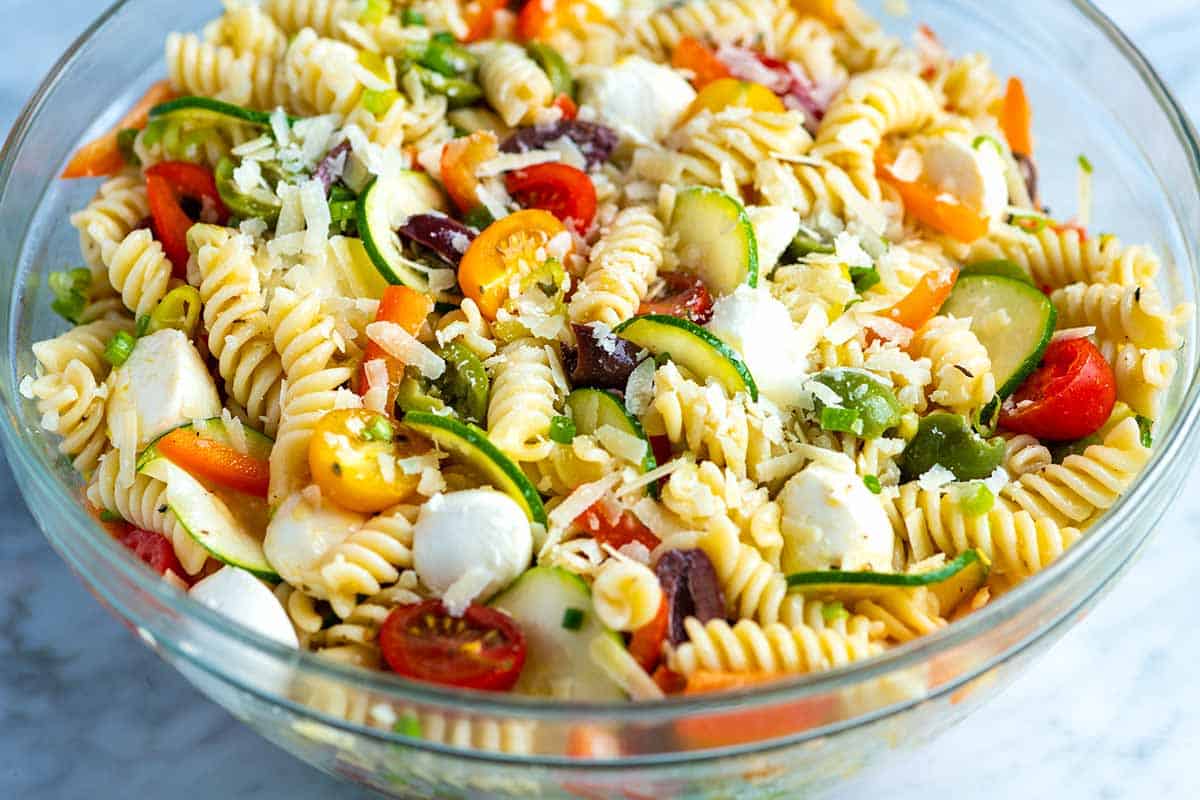
Scallions and green onions are often used interchangeably, but are they really the same thing? If you’re unsure about the difference between these two popular garnishes, you’ve come to the right place. In this article, we will explore the differences between scallions vs green onions and help you choose the perfect one for your recipes.
Scallions and green onions belong to the same family, but they do have some distinct characteristics. Scallions, also known as spring onions, have a white bulb with long green leaves. On the other hand, green onions have a slightly larger and more developed bulb, with a milder flavor compared to scallions.
Understanding the differences between scallions and green onions is important when it comes to choosing the right garnish for your dishes. Whether you’re looking to add a mild onion flavor or a crisp bite, we will guide you through the selection process.
The Differences Between Scallions and Green Onions

While scallions and green onions share many similarities, there are some key differences that set them apart. These differences can affect the taste, texture, and culinary uses of these garnishes.
One of the main differences between scallions and green onions is the size of the bulb. Scallions have a smaller, less developed bulb compared to green onions. The bulb of a scallion is usually white and slender, while the bulb of a green onion is slightly larger and may have a pale green hue. This size difference can affect the texture and taste of the two garnishes.
In terms of flavor, scallions have a milder taste compared to green onions. The younger and less developed bulb of a scallion contributes to its mild flavor profile. Green onions, on the other hand, have a slightly stronger taste due to their larger bulb. This difference in flavor can impact the overall taste of a dish, so it’s important to choose the right garnish based on your desired flavor profile.
Another difference between scallions and green onions is their culinary uses. Due to their mild flavor, scallions are often used raw in salads, salsas, and garnishes. They add a subtle onion flavor without overpowering the other ingredients. Green onions, on the other hand, are versatile and can be used both raw and cooked. They are often used in stir-fries, soups, and grilled dishes, where their slightly stronger flavor can shine through.
Nutritional Benefits of Scallions and Green Onions

Scallions and green onions not only add flavor to your dishes but also provide a range of nutritional benefits. These garnishes are low in calories and packed with essential vitamins and minerals.
Both scallions and green onions are a good source of vitamin C, which is important for immune health and collagen production. They also contain vitamin K, which plays a role in blood clotting and bone health. Additionally, scallions and green onions provide small amounts of vitamins A, B6, and folate.
In terms of minerals, scallions and green onions are rich in potassium, which helps regulate blood pressure and maintain heart health. They also contain small amounts of calcium, iron, and magnesium.
Scallions and green onions are also high in antioxidants, which help protect the body against cellular damage caused by free radicals. These antioxidants, such as flavonoids and sulfur compounds, have been linked to a reduced risk of chronic diseases, including heart disease and certain types of cancer.
Culinary Uses for Scallions and Green Onions
Scallions and green onions are incredibly versatile garnishes that can enhance the flavor and presentation of various dishes. Whether you’re looking for a subtle onion flavor or a bold kick, these garnishes have got you covered.
Scallions are commonly used raw in salads, salsas, and dressings. Their mild flavor adds a refreshing touch to these dishes without overpowering the other ingredients. Scallions can also be used as a garnish for soups, tacos, and sandwiches, providing a subtle onion flavor and a pop of color.
Green onions, due to their slightly stronger flavor, are often used in cooked dishes. They can be sautéed with other vegetables, added to stir-fries, or used as a topping for baked potatoes. Green onions can also be grilled or roasted alongside meats and vegetables, adding a smoky and savory element to the dish.
Both scallions and green onions can be pickled for a tangy and crunchy addition to sandwiches, burgers, and tacos. Pickled scallions and green onions can also be used as a condiment or a side to complement various dishes.
How To Choose The Perfect Garnish
Choosing the perfect garnish for your dishes depends on your desired flavor profile and culinary preferences. Here are some tips to help you choose between scallions and green onions:
- Mild flavor: If you prefer a milder onion flavor, opt for scallions. They have a subtle taste that won’t overpower other ingredients in your dish.
- Stronger flavor: If you want a slightly stronger onion flavor, go for green onions. They have a bolder taste that can withstand cooking methods.
- Texture: Consider the texture you want to achieve in your dish. Scallions have a crisp bite, while green onions offer a slightly softer texture.
- Culinary uses: Think about the specific dish you’re making. If you’re preparing a raw salad or salsa, scallions would be a great choice. If you’re cooking a stir-fry or soup, green onions would work well.
- Availability: Consider what is readily available to you. Scallions and green onions are often found in grocery stores, but availability may vary depending on your location and the season.
Ultimately, the choice between scallions and green onions comes down to personal preference and the specific dish you’re making. Experiment with both garnishes to find your preferred flavor and texture combination.
Tips for Storing Scallions and Green Onions
To ensure the freshness and quality of scallions and green onions, proper storage is essential. Here are some tips to keep your garnishes fresh for longer:
- Refrigeration: Both scallions and green onions should be stored in the refrigerator. Place them in a plastic bag or wrap them in a damp paper towel to prevent them from drying out.
- Trimming: Before storing, trim the roots of scallions and green onions. This will help prolong their freshness.
- Separation: If you have scallions and green onions together, separate them before storing. This will prevent cross-contamination and ensure that each garnish stays fresh.
- Moisture: Maintain a slightly damp environment for scallions and green onions. This can be achieved by placing a damp paper towel in the bag or container where you store them.
- Check for freshness: Regularly check your scallions and green onions for any signs of spoilage, such as sliminess or a foul odor. Discard any garnishes that appear spoiled.
Popular Recipes Using Scallions and Green Onions
Scallions and green onions are used in a wide variety of recipes, ranging from appetizers to main courses. Here are some popular dishes that feature these versatile garnishes:
- Scallion Pancakes: These savory pancakes are made with a simple dough and filled with chopped scallions. They are crispy on the outside and soft on the inside, perfect as a snack or appetizer.
- Green Onion Soup: Similar to French onion soup, this comforting dish features green onions as the star ingredient. The green onions are sautéed and then simmered in a flavorful broth, resulting in a delicious and hearty soup.
- Stir-Fried Beef with Scallions: This classic Chinese dish combines tender beef strips with scallions and a savory sauce. It’s a quick and easy stir-fry that packs a punch of flavor.
- Green Onion and Cheddar Cornbread: This twist on traditional cornbread incorporates chopped green onions and sharp cheddar cheese. The result is a moist and flavorful bread that pairs well with soups and stews.
- Scallion Ginger Noodles: These noodles are tossed in a tangy sauce made with scallions, ginger, soy sauce, and sesame oil. It’s a simple yet delicious dish that can be enjoyed as a main course or a side dish.
Wrapping Up
Scallions cover a broader range, including various onions, while green onions specifically refer to young onions. Both can add fantastic flavors and a pop of color to lots of dishes.
Armed with this info, you can confidently choose which one to use in your cooking. Whether you’re finely chopping scallions for a fancy touch or enjoying the milder taste of green onions in a stir-fry, these greens bring lots of possibilities to your kitchen.
So, the next time you’re cooking or shopping for veggies, remember these differences. Whether you’re a cooking pro or just starting out, understanding scallions and green onions adds a bit of kitchen wisdom to your skills, making your cooking adventures even more exciting.


























